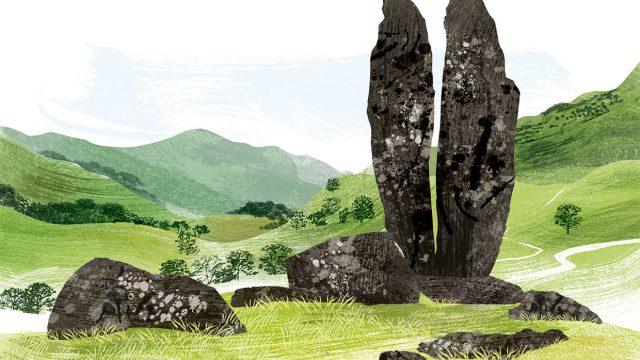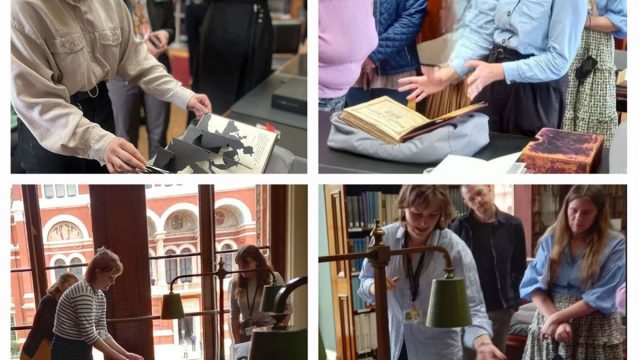In my previous blog we saw how chairs are used as signs of power and status. In this blog I will look at other types of seat on which to place on your (more lowly) medieval bottom
Medieval houses were generally sparsely furnished so it is not surprising that very few examples of medieval furniture have survived. The V&A has some rare specimens in the furniture collection. To find evidence of furniture it is possible to use sources such as wills and inventories, but also the images in medieval manuscripts such as those held in the Word & Image Department. Chairs with arms and back were the reserve of more important people but stools and benches appear on inventories of more humble dwellings. These are also visible in manuscripts illustrations.
A three or four-legged ‘staked’ stool was one of the simplest forms of seat. It was made by boring holes into the bottom of a solid wooden plank seat into which the legs were wedged. The three legged version was more stable than the four-legged on uneven floors. These rustic stools can be seen in manuscript illustrations depicting everyday life, such as this calendar scene from this Books of Hours.
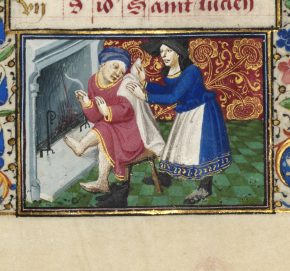
Such scenes showed the rural labours of each month and ‘sitting by the fire’ was the usual image for February; here we can see the man warming his feet by the fire is sitting on a simple staked stool.
Another relatively simple type was a ‘boarded’ stool, so called because it is constructed from straight boards pegged and braced together. They often had arched cut-outs forming the feet or side panels to make it easy to pick up and carry. The sides could be painted or carved to add decoration.
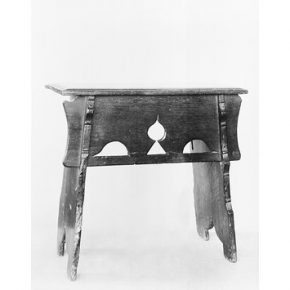
In the image below of the child Jesus disputing with teachers in the Temple, the teachers sit on similar boarded stools. Jesus’s authority over them and their knowledge is shown by depicting him seated on a canopied, throne type chair.

Benches or ‘forms’ were another staple of medieval seat furniture. Long, robust and without arms, they could either be free-standing or fixed to the wall (sometimes just like a shelf or sometimes with a back panel). They were often used with trestle tables at meal times. This image of the Last Supper shows the disciples sitting on a long bench.
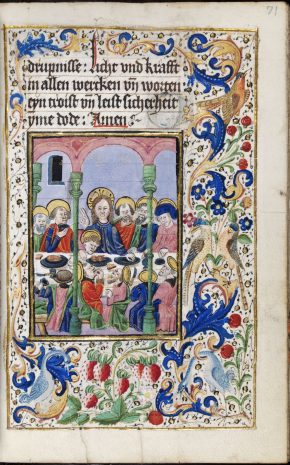
This bench and extending table in the V&A collections is probably a bit small to cater for a room full of disciples.
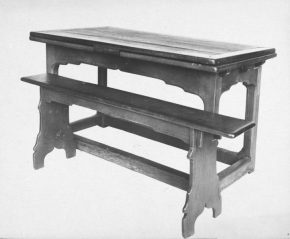
In late 15th century manuscripts we find examples of an ingenious type of seat called a ‘banc tournis’. It had a movable back rail that could be pivoted over depending on which way the sitter was facing ; these were customarily placed in front of the fire, as seen in this calendar scene image, so you could sit with your front or back at the heat.
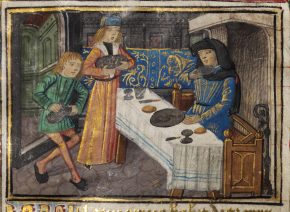
Seats are available in the National Art Library and in the Prints and Drawings Study Room, so why not come along and see more medieval manuscripts like those above.

